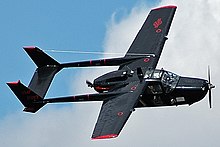Ted
The pilot formerly known as Twin Engine Ted
- Joined
- Oct 9, 2007
- Messages
- 29,889
- Display Name
Display name:
iFlyNothing
For my info, what all have you done to the Aztec since you purchased it. How much down time has that incurred and, if you don't mind, about how much has it cost? Do you have oxygen? What else do you plan to do besides the additional hydraulic pump?
Well, I bought it with engines at 250/1250, with a nice interior (8) and an ok exterior (6). With that in mind (and this is off the top of my head over the past 22 months and 650 hours of ownership)...
- New GPS and #1/#2 Nav/Coms (rest of the avionics have been what I wanted - any airplane could need that)
- Overhaul landing gear
- New tires
- Top overhaul (on the low time engine)
- Redid engine baffles, mostly the rubber but also including patching up some of the metal bits
- New exhaust (on the high time engine)
- Fixed a bunch of oil leaks
- Rebuilt a mag or two
- New mechanical fuel pump (right engine)
- Several repairs on the Janitrol
- New brakes
- New dimmer switches
- Engine monitor
- Getting the autopilot working
- One prop boot
- New hydraulic pump
- New vacuum pump (my plane has wet vacuum pumps)
- New spinner backing plate
- Replaced three starters (two ones died and one bad rebuilt unit)
- New battery/starter cables (factory ones are aluminum)
These are the major items that come up off the top of my head, and don't include the 6 100-hour inspections, which had a bunch of other routine maintenance that's gone with it. The fact that I bought a plane with low time engines and props helped.
Downtime has never been an issue, but I have good mechanics. Annuals/100-hours can be done in a workweek easily if you have competent people doing the work, and if done properly, larger items can be planned out properly. I've heard a lot of horror stories from other people having their far simpler out of commission for weeks or more at a time. I've never had an issue.
At this point, with everything I've read and researched, I'd have to say the Aztec is probably #1 on my list. Eventually, I might step up to a pressurized twin, that's kind of a dream of mine, but, in the real world of what I would actually use if for and how much I would fly, the Aztec seems to really fit the bill.
As someone who lusts after a 421 (one day...), the Aztec has never not done something I asked it to, other than go faster or climb higher, but it also doesn't have turbos. The one downside to the Aztec that the 310 and Baron have going for them is that nobody (to my knowledge) ever bolted bigger engines on an Aztec, so performance upgrades are pretty much out of the question. Cost wise you can't beat it, both for purchase and operating costs. As my instructor says it, "The only people who don't like Aztecs are the ones who've never flown them." Or, as the DPE who did my MEI ride said, "The Aztec is the best aircraft ever known to man in the history of the world."



 )
)